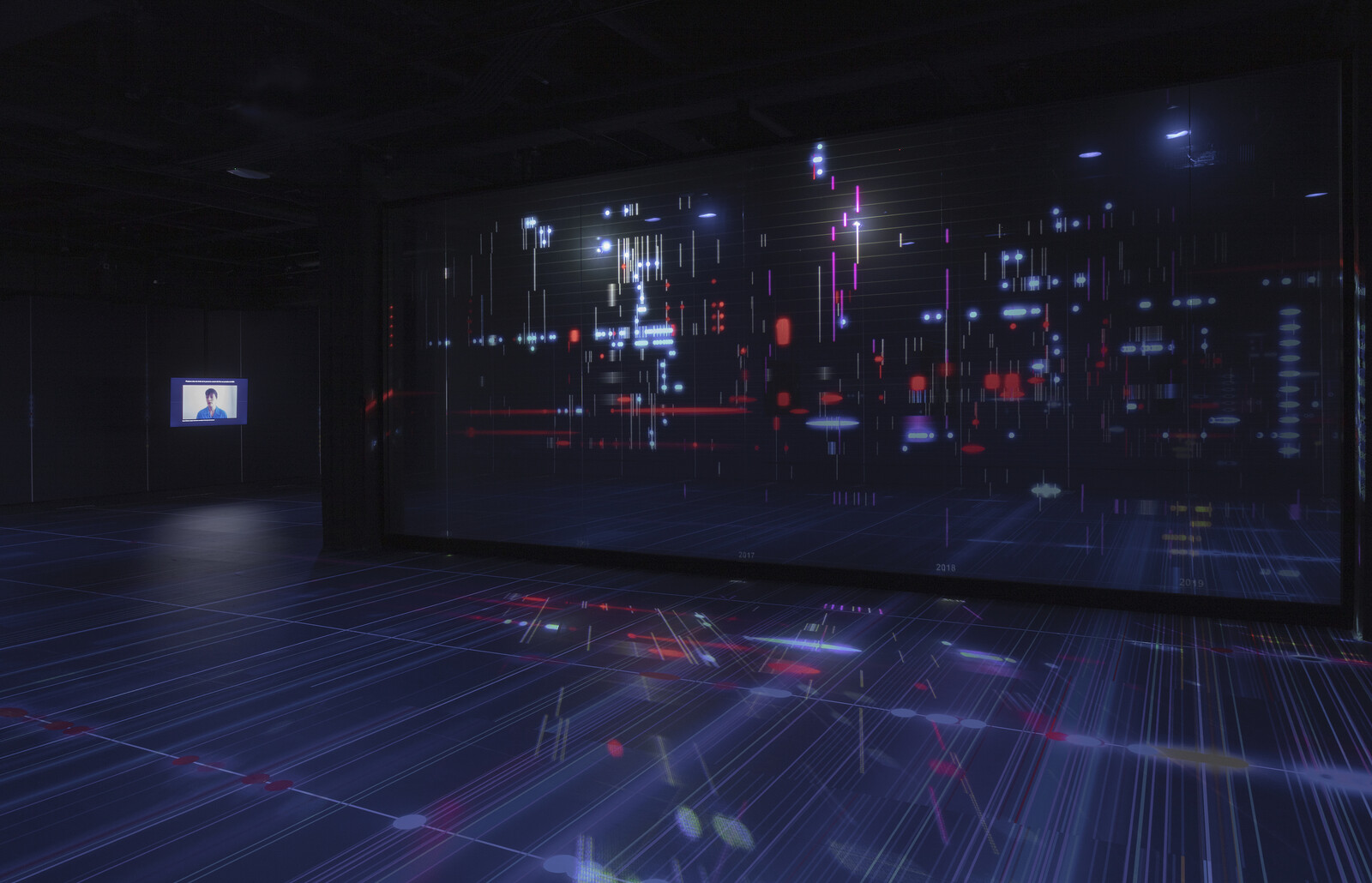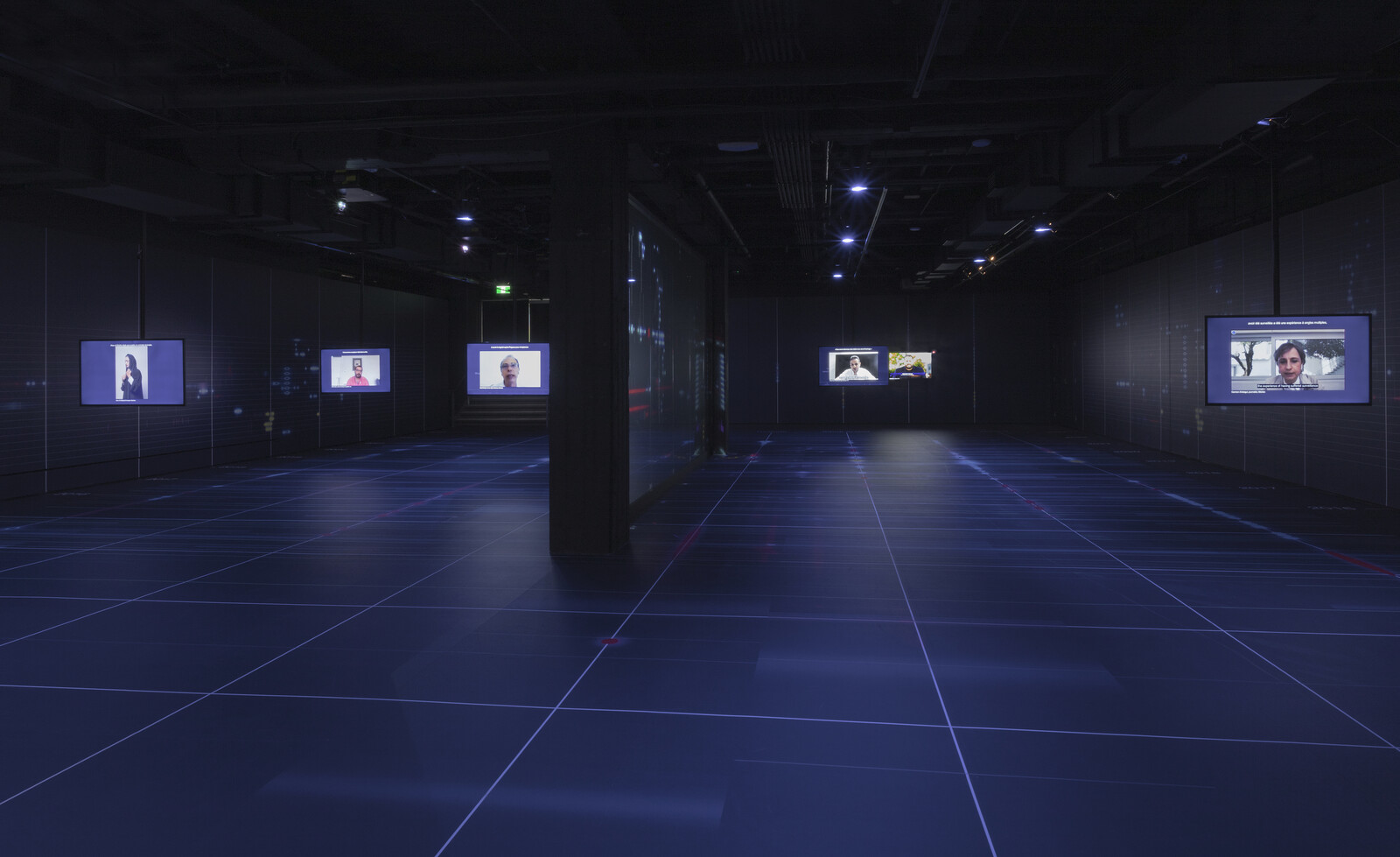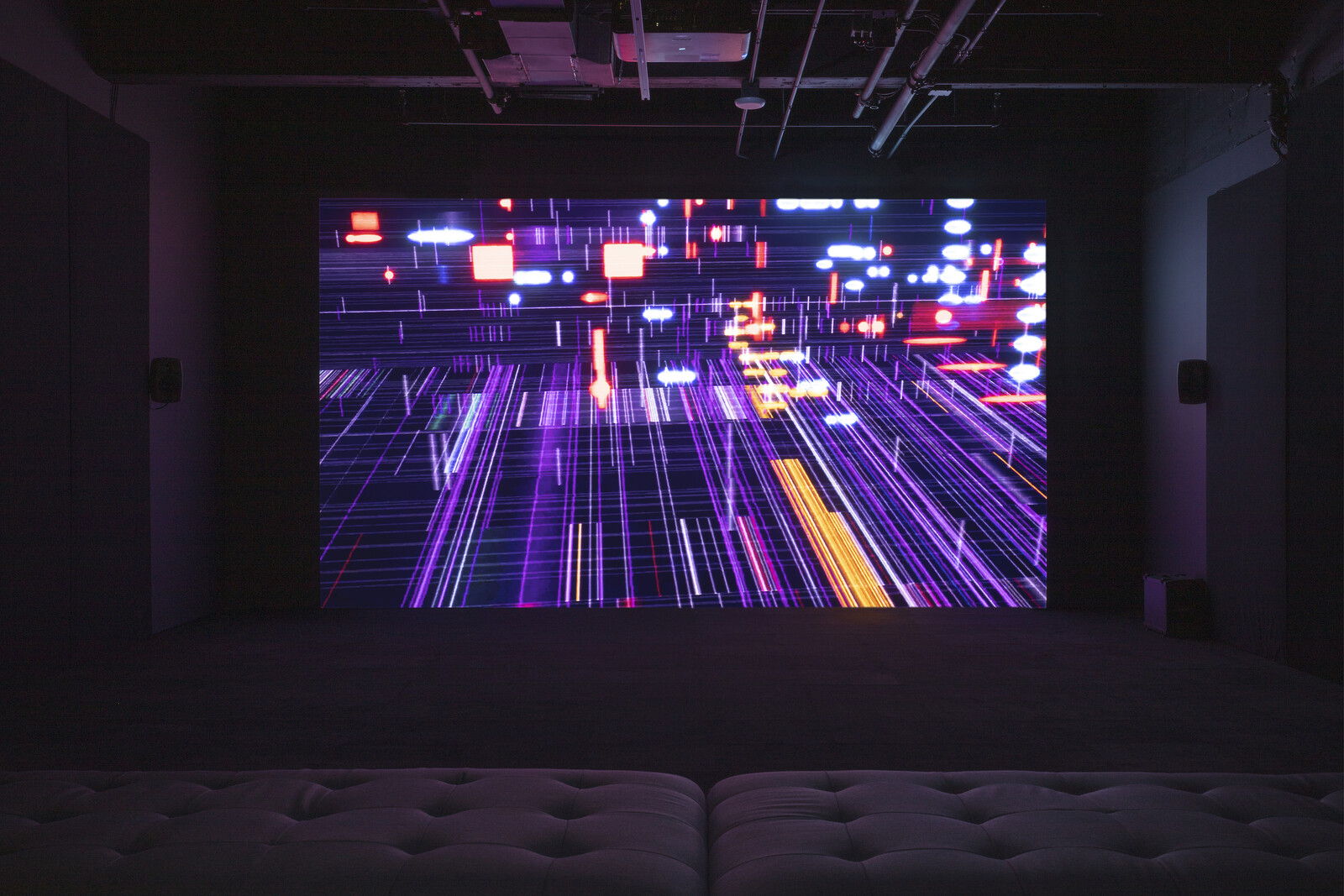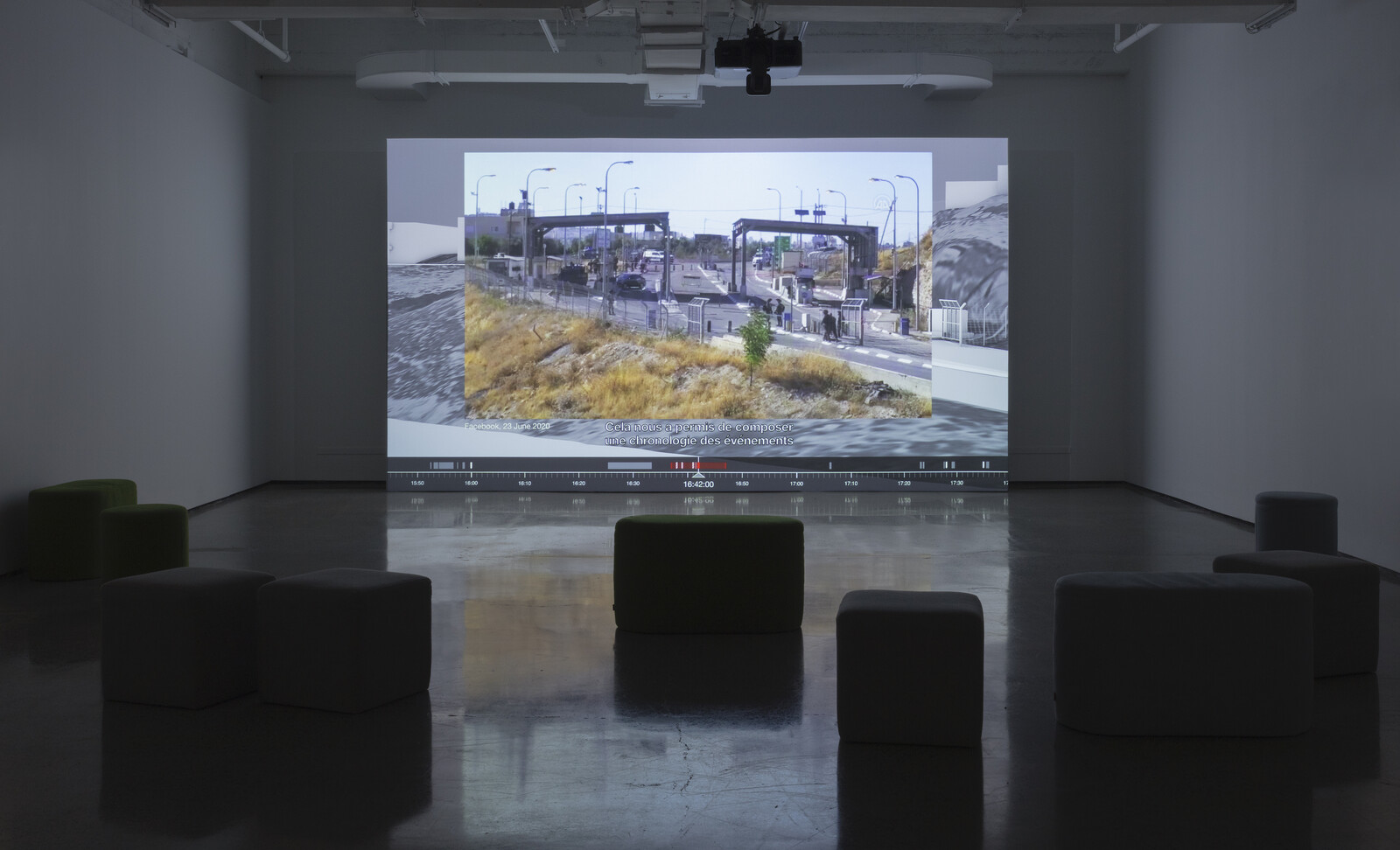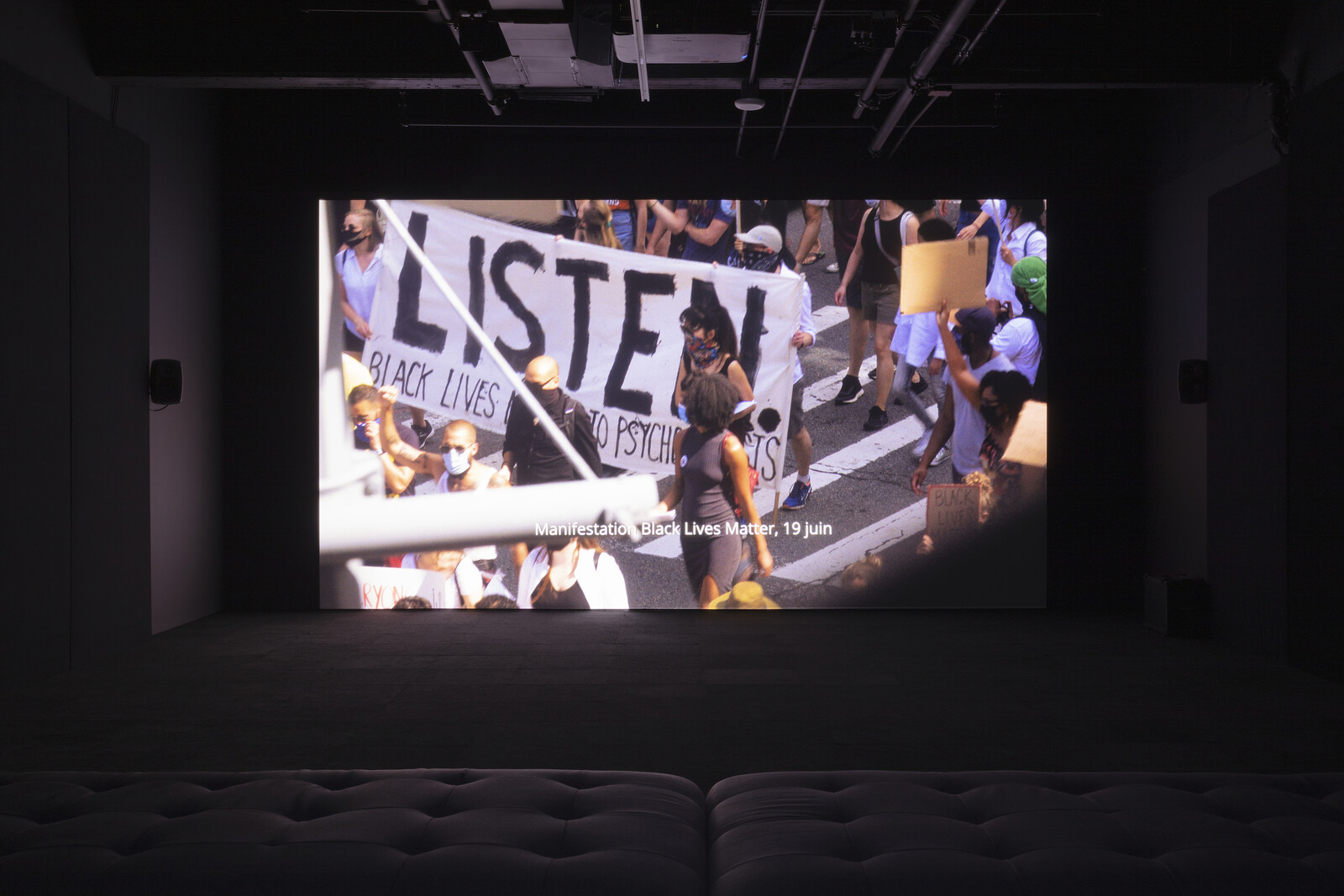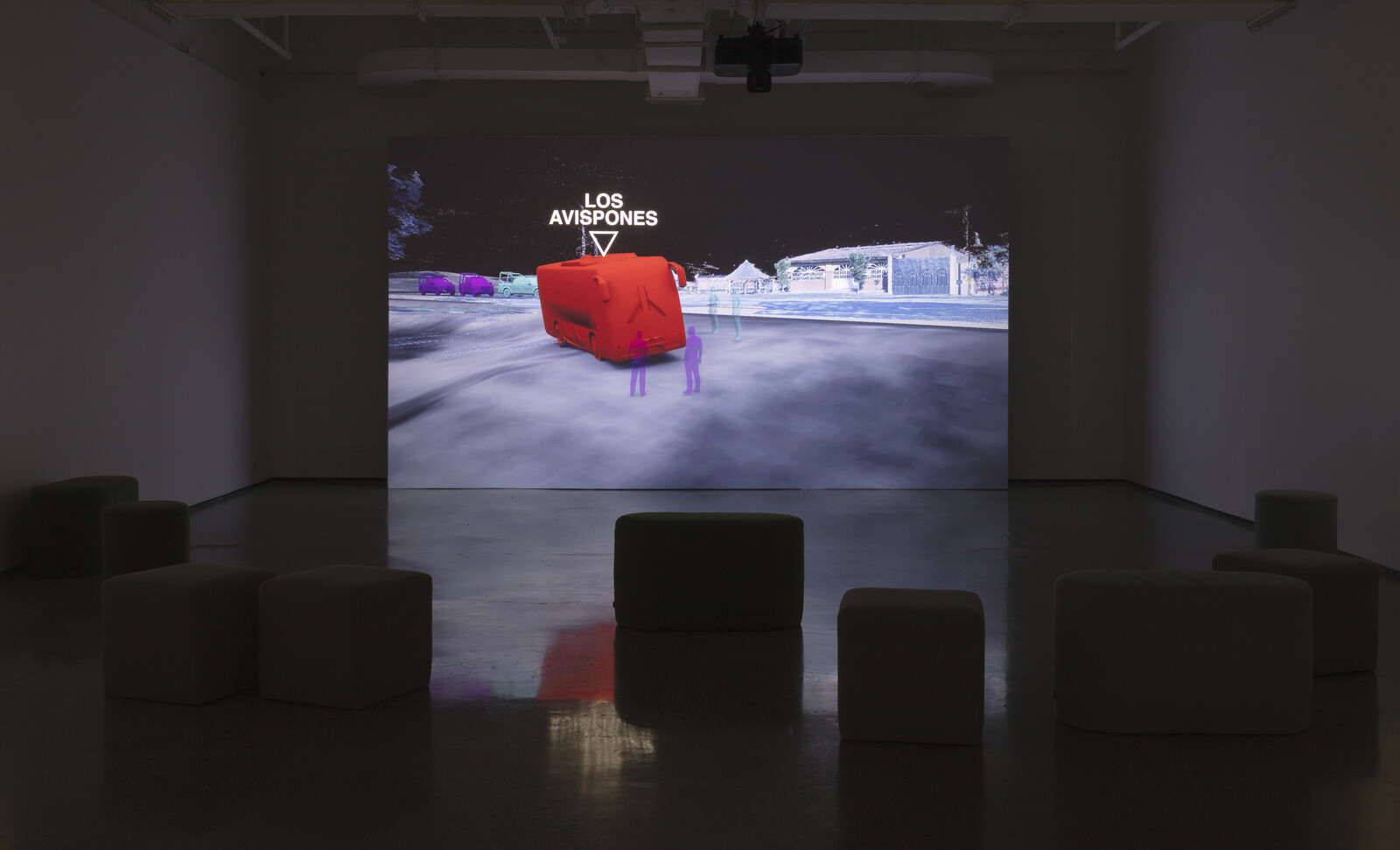Since the onset of the Covid-19 pandemic, international research collaborative Forensic Architecture has been investigating the use of Pegasus, a spyware product developed by the private Israeli cyber-arms firm NSO Group. Pegasus has been licensed by governments around the world to covertly surveil journalists, activists, and political opponents by hacking their phones, and has been linked to high-profile human rights cases such as the 2014 disappearance of 43 students from Ayotzinapa, Mexico, and the brutal murder of Saudi journalist Jamal Khashoggi in Istanbul in 2018. In “Terror Contagion,” presented at the Musée d’art contemporain de Montréal (MAC), Forensic Architecture and a few high-profile collaborators—filmmaker Laura Poitras, musician Brian Eno, and whistleblower Edward Snowden—map a preliminary network of Pegasus’ operations, attempting to visualize the frightening scale of its global reach as well as to humanize the experience of its civilian victims.
Mirroring the collaborative nature of Forensic Architecture’s work and the networks that Pegasus is designed to infiltrate, the exhibition fills a subterranean, windowless gallery with a dense web of interconnected films and videos that feature interviews with people targeted by the spyware alongside haunting, disturbingly beautiful data visualizations of these attacks and how they are interconnected. Explanations of how the data were gathered and analyzed are included throughout. The screens that play these moving images are installed inside an immersive matrix of light projections that renders the network of hacks on a human scale, each illuminated and color-coded node standing in for a known victim, the lines between them representing friendships, family ties, and professional affiliations. Eno contributes an ominous soundscape that fills the space and seems to pulse in rhythm with the data.
An introductory video on a suspended monitor notes that by participating in this project, Forensic Architecture’s members, collaborators, and interview subjects are likely increasing their exposure to future cyberattacks. In one video specifically about the use of Pegasus in Mexico (Pegasus au Mexique, 2021), journalist Carmen Aristegui describes her experience of being targeted. She and her son were sent false links to alleged funeral pages for dead loved ones, which they clicked on, granting the spyware access to their contacts, communications, and even phone cameras. Soon after, the devices of many activists and journalists in her network had been infected. Aristegui suspects the attacks came from the Mexican government, as they were made soon after her reporting exposed a major bribery scandal involving then-president Enrique Peña Nieto and a luxury home. Another video explores the use of Pegasus to surveil Saudi human rights activists including Yahya Assiri, who is interviewed from his home in the United Kingdom, and prominent Montréal-based dissident Omar Abdulaziz. The data visualized by Forensic Architecture reveals that both Assiri’s and Abdulaziz’s phones had been infected by Pegasus in the months leading up to the 2018 murder and dismemberment of Jamal Khashoggi, with whom they had been in regular communication.
In an exhibition brimming with numeric and anecdotal evidence of brutality, one of the most unsettling videos documents a sting operation organized by John Scott-Railton, a researcher at The Citizen Lab in Toronto. While investigating the activities of NSO Group, Scott-Railton had received suspicious texts from someone claiming to have legal information relevant to his project; it turned out to be a retired Israeli agent working for Black Cube, a private intelligence firm known to contract for the Israel Defense Force (IDF), whom Scott-Railton confronted in a restaurant while wearing a hidden camera in his necktie. The short video’s raw intensity and production quality call to mind Citizenfour, Laura Poitras’s harrowing 2014 documentary about Snowden’s revelations of widespread, illegal spying by the United States government. In the film Terror Contagion (2021), projected in an adjoining viewing room, Poitras records Forensic Architecture as they conduct their research for this project in 2020, relegated to their separate homes by the global lockdown and only able to communicate over encrypted teleconference calls.
The Pegasus research is framed by two other Forensic Architecture video-investigations, which are projected and looped in a seating area outside the entrance to the main gallery. Forced Disappearance in Iguala (2017) reconstructs the infamous events of September 26–27, 2014, when students on their way to a protest were attacked by state security forces and criminal organizations in a small town in Guerrero, Mexico, during which six were killed, 40 injured, and 43 disappeared. The Extrajudicial Execution of Ahmad Erekat (2021), meanwhile, reconstructs the killing of a young Palestinian man by Israeli soldiers at a checkpoint in occupied West Bank in June 2020; his body is left to bleed out on the ground in images uncannily reminiscent of the 2014 police killing of Michael Brown in Ferguson, Missouri. These videos use a variety of the “counter forensics” tactics for which the collective has become well known, drawing on crowdsourced civilian footage, eyewitness accounts, 3D rendering technologies, and spatial and temporal mapping to cast doubt on official government narratives. Fittingly, witnesses in ongoing legal proceedings related to both incidents are thought to have been targeted by Pegasus cyberattacks.
Despite increasing global awareness of its activities, NSO Group and its clients and affiliates have faced few material consequences. Perhaps most prominently, Canadian financier Yana Peel stepped down as CEO of Serpentine Galleries in 2019 following a report by the Guardian linking her to the private equity firm Novalpina Capital, which was co-founded and is managed by her husband and is the majority stakeholder in NSO. Peel released a statement to “clarify” that she was not directly involved in the running of the company or its decision to acquire NSO, leading to a retraction and apology published by the paper in early 2020. A notice posted by the MAC immediately inside the entrance to the exhibition called to mind this recent incident and, more broadly, the structures of wealth, power, and ideology against which work like Forensic Architecture’s stands. Without using the words Israel or Palestine, the text warns that the Ahmed Erekat video on view is “related to a specific incident in a complex geo-political context” and “could appear to be fueling negative sentiment towards a particular country or community,” which is not the institution’s intent. The statement was a reminder of the stakes (and limitations) of Forensic Architecture’s work: however much evidence they present, and however rigorously and objectively they attempt to do so, there will always be those with power to claim there is another side to the story.

